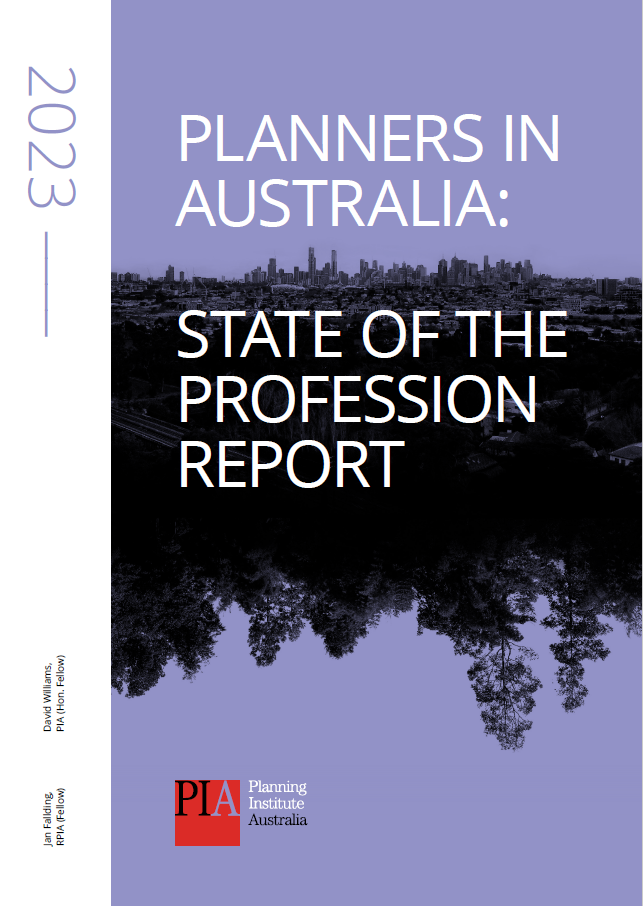The ACG��Ԫ��’s Planners in Australia: State of the Profession Report aims to provide a closer understanding of the ACG��Ԫ�� profession: who we are, where we work, and how we’re changing.
The report relies largely on data collected from the ABS 2021 Census regarding the occupation of ‘Urban and Regional Planners’ (‘Planners’), along with other data from a PIA-conducted survey of planners, Jobs and Skills Australia, and PIA-accredited urban ACG��Ԫ�� programs at universities across Australia.
Key findings for this report include the following statistics for 2021:
- Planning is a growth profession, with at least 13,691 Planners in Australia – an increase of 82% since 2006.
- More females are choosing to become Planners, with an increase of 113% in the number of female Planners since 2006 compared to a 62% increase in male Planners since 2006.
- Planners in Australia had a higher representation of people in the 25-44 year age brackets than people in all jobs, and a lower proportion of people over 45 years.
- New South Wales had the largest number of Planners in Australia (4,620 Planners), with the Northern Territory the fewest (82).
- Planners were overwhelmingly likely to be working in a capital city area (73% of all Planners), while 27% of Planners worked outside a capital city area.
- There were 232 local government areas in Australia where there were no Planners working at all – this is 43% of all local government areas*.
- Nearly one in four Planners in Australia were born outside of the country, with the UK, Southern Asia, and New Zealand the top three regions for overseas-born Planners.
- Aboriginal and Torres Strait Islander peoples were significantly underrepresented in the profession, with just 0.7% of Planners identifying as an Aboriginal or Torres Strait Islander (compared to 3.2% of the Australian population).
- Planners were most likely to be working in local government (44% of all Planners), followed by the private sector (37%), and state or territory governments (18%).
- Planners are entrepreneurial – with almost 1 in 10 owning their own business.
- Median weekly earnings for Planners (full-time work) was $2,177, compared to $1,593 for all jobs in Australia.
- Female Planners were more likely to work part-time, and female planners continue to report a wages gap (with female planners reporting an average annual base salary of $114,397 per annum compared to $120,895 for male planners in our PIA Planners’ Survey).
- Importantly, 58% of all respondents to our Planners’ Survey reported being extremely happy or very happy with their career right now, compared to just 3% who were very unhappy or extremely unhappy.
- Just 2% of people with a degree or higher in urban design and regional planning were unemployed and looking for full-time work.
- Of Planners in Australia, 10.5% reported having a mental health condition, similar to the 10.8% of the general population aged between 15 and 64.
What's next?
As we look to the future, the report considers plausible demand and supply factors for Planners, and we conclude that the demand for Planners is expected to continue to increase.
With the ACG��Ԫ�� profession an important part of responding to major national policy issues – including climate change and housing affordability – we see a need for a stronger focus on the future pipeline of Planners.
Indeed, Jobs and Skills Australia is currently forecasting 16,200 planning roles in 2026, an increase of 18.6% from the approximately 13,700 Planners in 2021.
Good planning is essential to Australia’s future, and the planners who shape our communities perform a vital role. Planners in Australia: State of the Profession Report shines a spotlight on these professionals, enriching our understanding of the profession’s identity, scope, and evolution.
BITE-SIZED CONTENT: DOWNLOAD THE KEY FINDINGS INFOGRAPHIC


